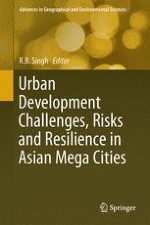2015 | OriginalPaper | Buchkapitel
3. Is It Sprawling Yet? A Density-Based Exploration of Sprawl in the Urban Agglomeration Region Around the Mega City of Delhi
verfasst von : Debnath Mookherjee, Eugene Hoerauf
Erschienen in: Urban Development Challenges, Risks and Resilience in Asian Mega Cities
Verlag: Springer Japan
Aktivieren Sie unsere intelligente Suche, um passende Fachinhalte oder Patente zu finden.
Wählen Sie Textabschnitte aus um mit Künstlicher Intelligenz passenden Patente zu finden. powered by
Markieren Sie Textabschnitte, um KI-gestützt weitere passende Inhalte zu finden. powered by
